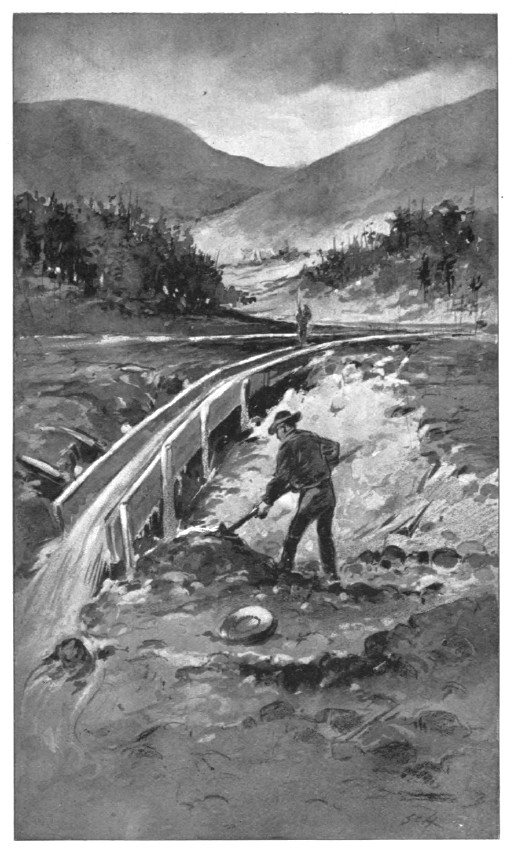The miner who is prospecting for placer gold nuggets is taking advantage of the natural forces of weathering and erosion that have been acting upon the deposit for ages. Frost, ice, mountain torrents, and the decay of rocks have broken down veins, liberated the gold they contain, and distributed it under gravels and in the sand of beds of both ancient and existing streams. These slow acting forces having done their work, release the gold and concentrate it, so that the miner only clears up and harvests what nature has already mined and prepared for him. The goal of the placer prospector is to discover the hiding places of these rich concentrations that nature has prepared for him over the eons.
Placers in place that is, lying in or near a gold vein may contain deposits similar in quantity and distribution to those of the original vein on which they lie. Placers of accumulation are the richest where the current of the stream was interrupted by diminution in its fall, by sudden change of direction, entrance of tributaries, or by reefs, bars, and eddies. Small depressions, creases, holes, and fissures in bed-rock over which the current passes are likely to be rich. Alluvial layers may, at intervals, by a cementing process, form a seeming bed rock, called a false bottom. There may be one or more such false bottoms before the true bed-rock is reached, and gold may occur on each of these. Placers have generally been formed of material transported some distance by glaciers and drifts, but placer diggings sometimes occur on the very outcrop of decomposed gold veins, and are called "placers in loco," or in place.
In hunting for gold, some things are indispensable, though experience will suggest a substitute for many very useful tools. The auriferous dirt and gravel must be taken up and separated with care from the gold, if you are to know in what quantity the gold is present; and for this work the pick, shovel and gold pan are the tools commonly used, though some experienced prospectors take a shovel, and hatchet, or knife only, when making a long cruise with a light pack; others go still lighter, with a knife and a horn spoon or a tin cup, but one cannot learn to use such an outfit successfully in a week, and they are slow at best. The most important tool for a beginner is a gold pan, which should be made of one piece, of plastics or perhaps Russian iron or sheet steel, pressed into shape and stiffened with a steel wire in the rim. A pressed frying pan with the handle cut off is a good substitute, if there is no grease in it.
Having found dirt likely to contain gold, and water with which to test it, take about ten pounds of dirt in the pan and put it under the water; then stir it and Shake it until the mud is softened, and the gravel and sand is loose and clean, washing away the thin mud as fast as you make it. Next hold the pan half out of the water at a low angle, and shake, roll and dip it in such a manner that the heavy parts will sink and the light parts will be washed off the top and over the side. When you have washed it all out but the last handful, or when you begin to see a streak of black sand along the edge of the gravel, you should take care not to rush the gold over the side, which can be prevented by holding the pan flat and shaking it occasionally. When you have washed out all of the white sand and taken out the pebbles, examine the black sand carefully by rolling it around in the pan with water; and if any portion is much heavier than the rest, examine that by crushing
it in your teeth, or otherwise; if it is malleable it is metal, and unless it is a piece of a bullet, may be gold. The horn, sometimes called the great horn spoon, is useful to test a small quantity of dirt or crushed gold ore with, where water is scarce. It is used in
about the same manner as a pan, and for the same purpose. It is made by cutting the outer arc from a cow's horn and scraping it down thin and smooth, making a boat-shaped tool holding about half a pint and weighing but a trifle.
Continue on to:
Placer Prospecting: Part I
Placer Prospecting: Part II
Placer Prospecting: Part III
Placer Prospecting: Part IV
Placer Prospecting: Part V
Placer Prospecting: Part VI
Return To:
All About Placer Gold
Deposits

